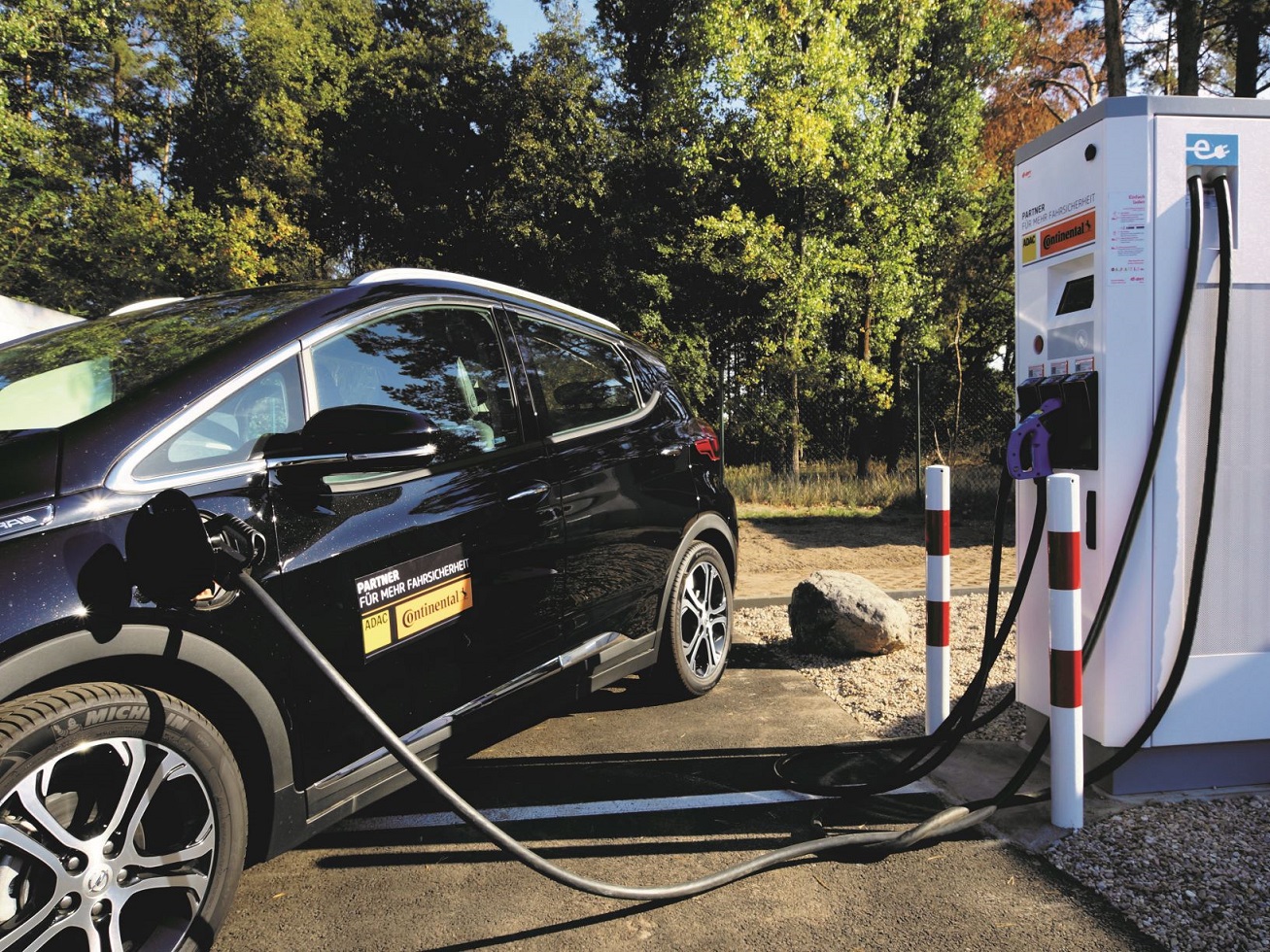ADAC - Electrically on the move

Full speed ahead into the energy transition! Brandenburg is paving the way for journeys into a mobile future with green electricity, in Linthe. One of the largest facilities for driver safety trainings has now two charging points for electric vehicles. The stations are open to everyone who wants to refuel energy in Brandenburg on a sustainable basis.
Plug a cable into the car and into the charging station, activate the station with the charging card, select the plug type, select „Start charging“ – done. Energy flows into the electric tank, as much as desired. The filling station of the future will not smell like petrol. Electricity flows through it. The station is environmentally friendly and easy to use. Just like on the premises of the ADAC Driving Safety Centre Berlin-Brandenburg in Linthe in the district of Potsdam-Mittelmark. In autumn 2018, two new charging stations were installed there, which can be used with all common vehicles with an electric drive.
Quick and convenient charging
For example, road users who are in a hurry can refuel with up to 50 kilowatts of direct current at a rapid charging station. Another practical and non-standard feature of charging stations for electric vehicles: the charging cables in Linthe are already attached to the charge point and do not have to be brought along. It was important to the State of Brandenburg that the charging stations on the ADAC grounds offer benefit for the region. They are therefore accessible to the public. “Everyone who travels in beautiful Brandenburg can use them,“ affirms Stefanie Ruppe, head of corporate development at the driver safety training centre. This is in line with the project goal of providing an infrastructure for alternative drive technologies to all visitors, training participants and travellers – and to expand Brandenburg‘s path to electro-mobility.
For travellers and the region
The installation of the charging points was co-financed by the European Regional Development Fund (ERDF). By promoting and using innovative technology that reduces CO2 emissions, the country is maximising its potential to save energy and increase its efficiency. After all, the more electricity in the electricity mix comes from renewable energies, the more positive will be the climate balance. A lower proportion of coal, for example, means that less CO2 emissions are emitted. Electric cars are considered emission-free because they do not produce direct emissions – unlike vehicles with internal combustion engines. Alternative drive technologies, such as those using electricity, are therefore more climate-friendly. The demand for electric mobility is growing. In order to meet this demand, Brandenburg and the EU are investing in the necessary charging infrastructure in the region. For example, near the A9 motorway on the grounds of the driver safety training centre. In addition, a solar power system was installed on the roofs of the centre in July 2020. It produces around a fifth of the electricity required on the site, which reduces CO2 emissions.
For further information, visit www.fahrsicherheit-bbr.de
Plug a cable into the car and into the charging station, activate the station with the charging card, select the plug type, select „Start charging“ – done. Energy flows into the electric tank, as much as desired. The filling station of the future will not smell like petrol. Electricity flows through it. The station is environmentally friendly and easy to use. Just like on the premises of the ADAC Driving Safety Centre Berlin-Brandenburg in Linthe in the district of Potsdam-Mittelmark. In autumn 2018, two new charging stations were installed there, which can be used with all common vehicles with an electric drive.
Quick and convenient charging
For example, road users who are in a hurry can refuel with up to 50 kilowatts of direct current at a rapid charging station. Another practical and non-standard feature of charging stations for electric vehicles: the charging cables in Linthe are already attached to the charge point and do not have to be brought along. It was important to the State of Brandenburg that the charging stations on the ADAC grounds offer benefit for the region. They are therefore accessible to the public. “Everyone who travels in beautiful Brandenburg can use them,“ affirms Stefanie Ruppe, head of corporate development at the driver safety training centre. This is in line with the project goal of providing an infrastructure for alternative drive technologies to all visitors, training participants and travellers – and to expand Brandenburg‘s path to electro-mobility.
For travellers and the region
The installation of the charging points was co-financed by the European Regional Development Fund (ERDF). By promoting and using innovative technology that reduces CO2 emissions, the country is maximising its potential to save energy and increase its efficiency. After all, the more electricity in the electricity mix comes from renewable energies, the more positive will be the climate balance. A lower proportion of coal, for example, means that less CO2 emissions are emitted. Electric cars are considered emission-free because they do not produce direct emissions – unlike vehicles with internal combustion engines. Alternative drive technologies, such as those using electricity, are therefore more climate-friendly. The demand for electric mobility is growing. In order to meet this demand, Brandenburg and the EU are investing in the necessary charging infrastructure in the region. For example, near the A9 motorway on the grounds of the driver safety training centre. In addition, a solar power system was installed on the roofs of the centre in July 2020. It produces around a fifth of the electricity required on the site, which reduces CO2 emissions.
For further information, visit www.fahrsicherheit-bbr.de

